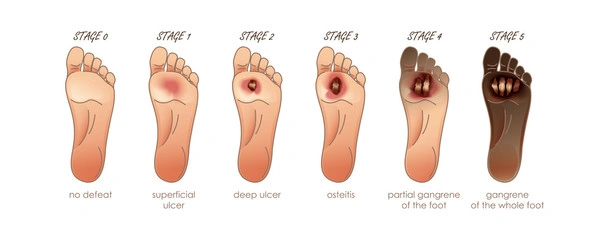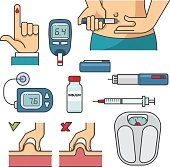What are the diabetic tools and equipments?
01-10-24
Simply said, diabetes supplies are the tools and equipment you'd require as a diabetic to control your high blood sugar levels (hyperglycemia). When this illness is discovered, a person's life can nearly completely collapse. However, if you arm yourself with enough resources, managing your diabetes will be much simpler.
1. Administration of insulin
●Using a syringe or insulin pen, you have two options for administering insulin. Your doctor will advise you on the dosages and the recommended number of administrations. These are commonly referred to as insulin shots.
●Insulin pump: Pumps are an alternative to shots. These are reasonably convenient because all you have to do is affix the pump to your underwear, socks, or waistband. It includes a tiny "catheter."
●Inhalers are another way for diabetics to take their insulin injections. It is quite similar to what asthmatics do. Patients with diabetes breathe a small insulin powder into an unknowable environment. The insulin then connects with the body's blood via microscopic blood arteries.
2. Diabetes test strips, blood lancets, and blood sugar meters
A portable electronic gadget called a blood sugar meter, also known as a blood glucose meter or glucometer, tests your blood sugar to make sure it is not too high or low.
You will first take a small sample of blood using a blood lancet, a tool that quickly pricks your skin. Put a drop of liquid on the edge of a disposable test strip for diabetes. Wait for the monitor to show your blood sugar level after inserting the strip. Keep track of your outcomes to assist your doctor in determining whether your treatment strategy is effective.
How frequently you need to use your blood sugar meter will be specified by your doctor. Test yourself if you have any of the following symptoms of low blood sugar: trembling, anxiety, lightheadedness, confusion, hunger, perspiration, or sleepiness.
3. Test Strips for Ketones
In the absence of sufficient insulin, your body uses fat metabolism to produce energy. Ketones are the result of this. A symptom that your diabetes is out of control is having high ketone levels in your urine.
Pee into a clean cup, insert the test strip inside, and perform a ketone test at home. Remove any extra urine and watch the strip until it changes color; the instructions will specify how long this will take. Compare the strip's color to the kit's color wheel. Check your ketone levels again in a few hours if they are low. Consult your doctor straight away if your levels are moderate or high.
4. Glucagon with glucose tablets
It's common for blood sugar levels to drop too low when you're first learning to control them. If they do, you'll need to get them back up right away to prevent potentially harmful side effects like seizures. It is wise to keep glucose tablets on hand because of this.
When your blood sugar is low (often below 70 mg/dL) or you are experiencing hypoglycemia symptoms, you can take these fast-acting sugar pills.
Someone else will need to provide glucagon to you if your levels drop too low, and you lose consciousness. By adjusting your liver, this hormone causes it to release glucose from storage into your blood.
5. Medical Alert Bracelet for Diabetes
A diabetes medical alert necklace or bracelet can assist paramedics or doctors in treating you in an emergency situation if you are unable to communicate. Many persons with diabetes have one, especially those who use insulin.
A medical alert bracelet may have the following information:
●taking insulin
●many allergy types
●Name and phone number of the emergency contact
6. Continuous glucose monitoring
A tiny sensor that is commonly implanted under the skin on the abdomen or arm is how a CGM functions. The sensor measures your interstitial glucose level, or the glucose present in the fluid between your cells. Every few minutes, the sensor measures glucose. The data is wirelessly transmitted from a transmitter to a monitor.
7. Smart wearables
In certain cases, wearables incorporate built-in GPS, barometer, heart rate (HR), ACC, or gyroscope sensors, which are functionalities that increasingly rival those of traditional smartphones. Wearables outperform smartphones for detecting physiological signals like skin temperature, electrocardiograms, and heart rates (HR), which are particularly important for tracking DM-related factors.
Electronic skin patches are also of great help. The stretchable patch is placed on the skin and measures the amount of glucose excreted in perspiration. If the level rises beyond a preset threshold, heaters included in the patch activate and melt the coating on the microneedles, allowing them to deliver the proper dosage of medication through the skin.















